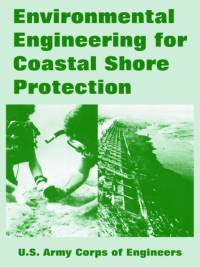Über Environmental Engineering for Coastal Shore Protection
This manual summarizes research and field experience gained in the area of environmental engineering for coastal shore protection. It addresses both natural and human induced changes in the coastal zone; the structural and nonstructural measures that coastal engineers employ against these changes; and the desirable and adverse impacts of the measures. Selection of the best environmental and engineering solution to a specific coastal problem requires a systematic and thorough study because of the complexity of coastal projects and the diversity of coastal environments. The prerequisites to such a study are a clear definition of the problem and cause of the problem and then a comprehensive review of potential solutions (alternatives). This manual addresses both natural and human-induced changes in the coastal zone; the structural and nonstructural measures that coastal engineers employ against these changes; and the beneficial and adverse impacts of these measures. Immediate and long-term impacts in the project area, as well as adjacent environments, are summarized. In addition, this manual emphasizes potential steps for obtaining desirable results and reducing adverse impacts. The manual focuses primarily on shore protection, i.e., coastal projects designed to stabilize the shore against erosion related principally to current and wave action: however, the material is also applicable to harbor and navigation channel improvements. The manual applies to both the Great Lakes and the coastal marine systems. It identifies the principal environmental factors that should be considered in design and construction and provides techniques for attaining environmental quality objectives. Proper techniques for collection, analysis, and interpretation of environmental data to use in planning and engineering are outlined.
Mehr anzeigen

